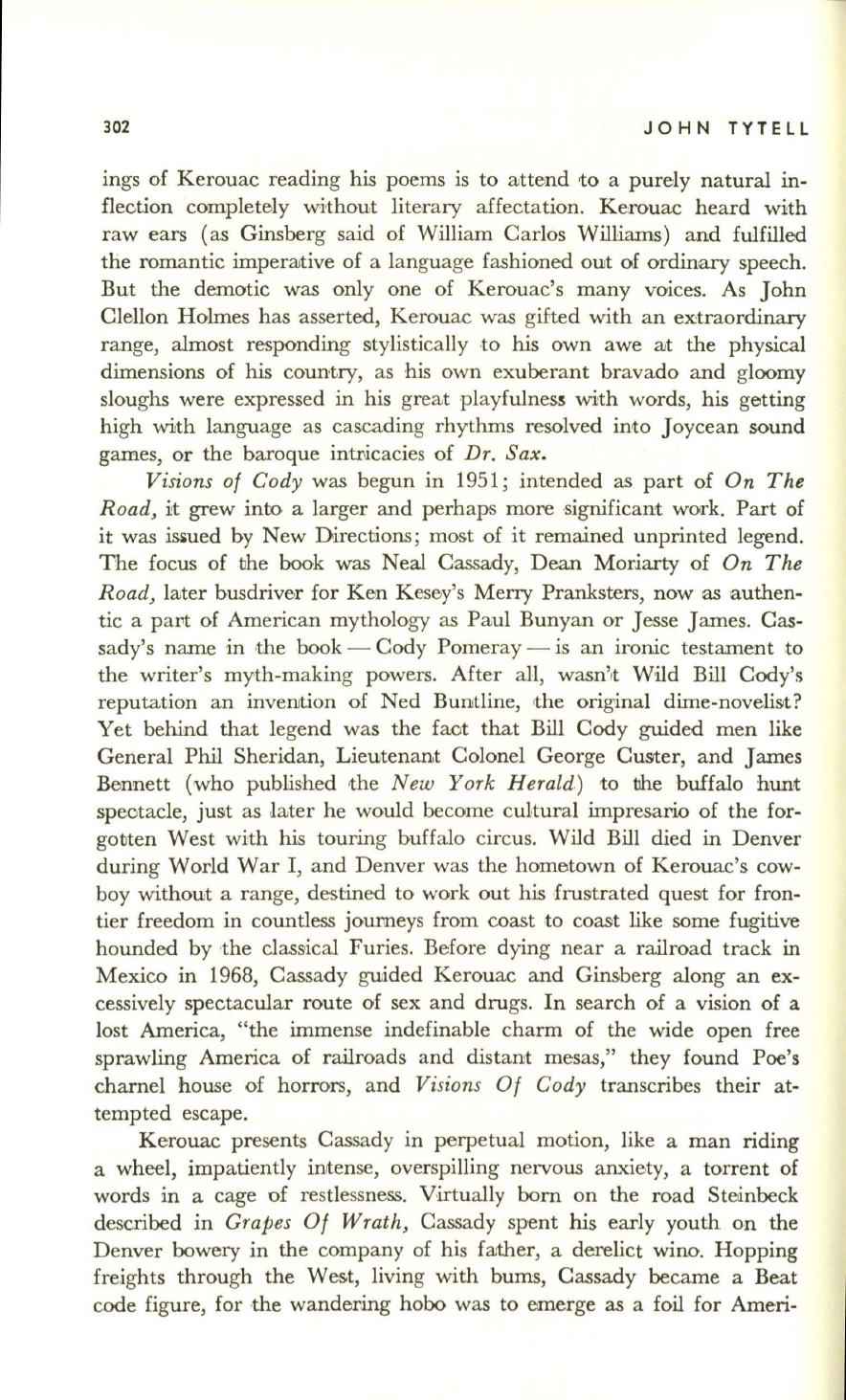
302
JOHN
TYTELl
ings of Kerouac reading his poems is to attend to a purely natural in–
flection completely without literary affectation. Kerouac heard with
raw ears (as Ginsberg said of William Carlos Williams) and fulfilled
the romantic imperative of a language fashioned OUit of ordinary speech.
But the demotic was only one of Kerouac's many voices. As John
Clellon Holmes has asserted, Kerouac was gifted with an ex:traordinaxy
range, almost responding stylistically to his own awe Glit the physical
dimensions of his country, as his own exuberant bravado and gloomy
sloughs were expressed in his great playfulness wi:th words, his getting
high with language as cascading rhythms resolved into Joycean sound
games, or the baroque intI'icacies of
Dr. Sax.
Visions of Cody
was begun in 1951; intended as part of
On The
Road,
it grew into a larger and perhaps more -significant work. Part of
it was iSiued by New Directions; most of it remained unprinted legend.
The focus of vhe book was Neal OassGlidy, Dean Moriarty of
On The
Road,
later busdriver for Ken Kesey's Merry Pranksters, now as authen–
tic a pal't of American mythology as Paul Bunyan or Jesse James. Cas–
sady's name in the book - Cody Pomeray - is an ironic testament to
the writer's myth-making powers. After all, wasn't Wild Bill Cody's
reputation an invenrt:.ion of Ned Buntline, the original dime-novelist?
Yet behind tha:t legend was the faat that Bill Cody guided men like
General Phil Sheridan, Lieutenant Colonel George Custer, and James
Bennett (who pubLished the
New York Herald)
to tJhe buffalo hunt
spectacle, juStt as ,later he would become cultural impresario of the for–
gotten West with his touring buffalo circus. Wild Bill died in Denver
during World War I, and Denver was the hometown of Kerouac's cow–
boy without a range, destined to work out his frustrated quest for fron–
tier freedom in countless journeys from coast to coast like some fugitive
hounded by the class'ical Furies. Before dying near a railroad track in
Mexico in 1968, Cassady guided Kerouac and Ginsberg along an ex–
cessively spectacular route of sex and drugs. In search of a vision of a
lost America, "the immense indefinable charm of the wide open free
sprawling America of railroads and distant mesas," they found Poe's
charnel house of horrors, and
Visions Of Cody
transcribes their at–
tempted escape.
Kerouac presents Cassady in perpetual motion, like a man riding
a wheel, impatiently intense, overspilling nervous anxiety, a torrent of
words in a cage of restlessness. Virtually born on the road Steinbeck
described in
Grapes Of Wrath,
Cassady spent his early youth on the
Denver bowery in the company of his father, a derelict wino. Hopping
freights through the West, living with bums, Cassady became a Beat
code figure, for ,the wandermg hobo was to emerge as a foil for Ameri-


